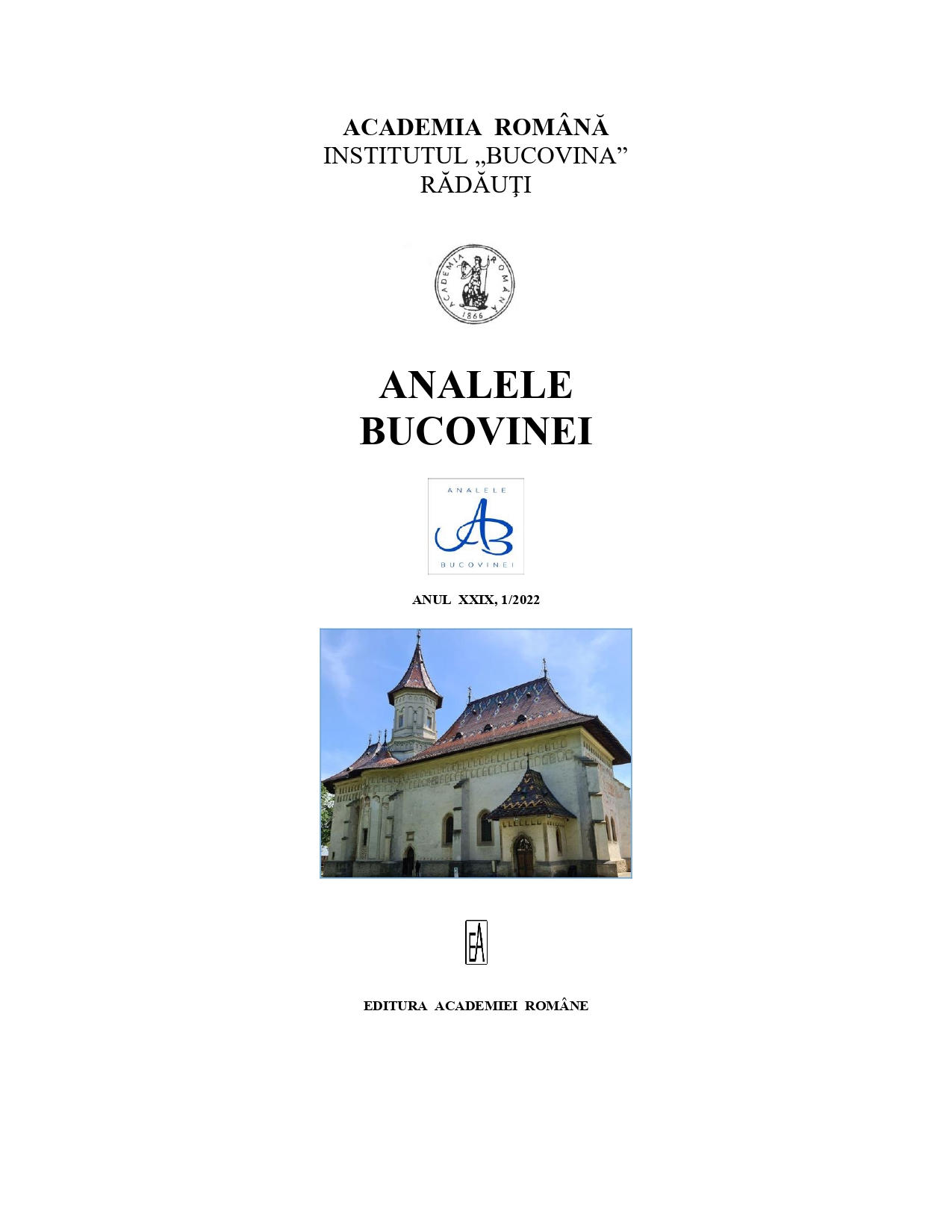FOLCLOR ȘI CULTURĂ TRADIȚIONALĂ ÎN REVISTA „JUNIMEA LITERARĂ” (1904–1914)
Folklore and Traditional Culture in “Junimea literară” (1904–1914)
Author(s): Elena PascaniucSubject(s): History, Cultural history, Customs / Folklore, Recent History (1900 till today), Romanian Literature, Pre-WW I & WW I (1900 -1919)
Published by: Editura Academiei Române
Keywords: Romanian literary life; folklore; Bukovina; “Junimea literară”;
Summary/Abstract: In Bukovina, the cultural and especially the Romanian literary life recorded fewer moments of affirmation than the young, in German schools and universities educated intellectuals and writers here would have wanted. The literary magazines (mostly published in Chernivtsi) that existed until the beginning of the twentieth century were not at all numerous and had an existence marked by political conflicts and censorship. Frequently, their editors reproached the readers for their indifference and lack of financial support. “Foaia Societății pentru Cultura și Literatura Română în Bucovina” (1865–1869) and “Aurora română” (1881–1882), for example, were the only publications that appeared in Chernivtsi before 1900. They were exclusively oriented towards culture and literature, two fields that were present, however, in the newspapers from Bukovina, usually in supplements such as “Foiţa literară”. They were also to be found in the first Romanian (in fact, bilingual) newspaper of the province, “«Bucovina». Gazetă pentru politică, religie și literatură” (1848–1850) and later in “Revista politică” (1886–1890, Suceava), “Gazeta Bucovinei” (1891–1897, Chernivtsi) etc. In the last two decades of existence of the Duchy of Bukovina, the periodical “Junimea literară” catalyzed the literary aspirations of a new generation of young Romanian students. Founded in Chernivtsi, in January 1904, “«Junimea literară». Scientific Literary Journal” had a monthly appearance until 1914, the editor-in-chief beeing Iancu I. Nistor (1904–1908), who was joined by George Tofan in 1908. Because the journal offered especially between 1904 and 1907 a generous space for the publication of folklore material, of mythology studies and folk culture, of lyrics and folk legends and of a folk bibliography, we support in our article the statement that the mentioned periodical mirrors the folkloristic movement in Bukovina in the last decades of the 19th century, a movement intensified by the researches and folk collections of Simion Fl. Marian, Ion G. Sbiera, Elena Niculiţă-Voronca and Dimitrie Dan. The appearance of this Chernivtsi magazine coincides with the emergence and support of new orientations and approaches in the research of folklore, one of them being the ethnomusiological research of the traditional culture, which was initiated in Bukovina by Matthias Friedwagner and Alexandru Voevidca. Documentary echoes about the results of their extensive investigation (supported by hundreds of other collaborators) at the very moment of its unfolding we find also in“Junimea literară”. The conclusion of the article is that in Bukovina, before the First World War, “Junimea literară” wanted and managed to exercise a modeling cultural action on the Romanian society and language also through the published folklore materials and studies.
Journal: ANALELE BUCOVINEI
- Issue Year: 58/2022
- Issue No: 1
- Page Range: 143-159
- Page Count: 17
- Language: Romanian

